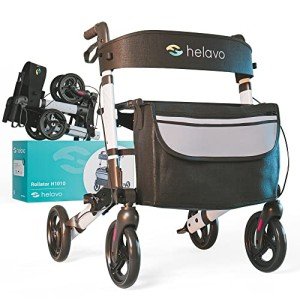10 Easy Ways To Figure Out The Heavy-Duty Walker In Your Body.
The Comprehensive Guide to Heavy-Duty Walkers: Enhancing Mobility and Independence
In an aging society where individuals are significantly concentrated on preserving their self-reliance and mobility, heavy-duty walkers have become necessary mobility aids. These products offer improved support, stability, and sturdiness, making them ideal for heavier individuals or those who need extra assistance while walking. In this comprehensive guide, we will look into the features, advantages, and various kinds of heavy-duty walkers, intending to offer a well-rounded understanding for those thinking about a purchase or those assisting someone in need.
What is a Heavy-Duty Walker?
Heavy-duty walkers are specifically designed for people requiring additional support and stability while walking. Unlike basic walkers, which might have weight limits around 300 pounds, heavy-duty models can accommodate individuals weighing anywhere from 300 to over 500 pounds. They are built with sturdier products and include a wider frame for increased stability.
Key Features of Heavy-Duty Walkers
Function
Description
Weight Capacity
Typically 300— 500+ pounds, suitable for bigger people.
Frame Material
Constructed from heavy-duty aluminum or steel for strength.
Width and Height
Wider frames and adjustable heights for user comfort.
Footings
Created with larger rubber suggestions or wheels for improved grip and traction.
Seats and Accessories
Lots of models feature padded seats and baskets for convenience.
Benefits of Using Heavy-Duty Walkers
Heavy-duty walkers offer different advantages beyond easy mobility:
- Enhanced Stability: Their durable design avoids tipping and provides a secure base, minimizing the threat of falls.
- Enhanced Confidence: With the included support, users typically feel more secure and positive when walking, encouraging mobility.
- Customization: Many heavy-duty walkers have adjustable heights and configurations, accommodating the private needs of users.
- Convenient Design: Several designs feature integrated seats, storage areas, or multipurpose features that make bring individual items easier.
- Therapeutic Benefits: Regular usage of walkers can assist improve circulation and promote a more active way of life, which is important for total health.
Typical Conditions Benefiting from Heavy-Duty Walkers
Condition
Explanation
Weight problems
Additional support for heavier users needing aid with mobility.
Arthritis
Supplies stability and reduces stress on joints while walking.
Post-Surgery Recovery
Assists with rehab and progressive return to mobility.
Neurological Conditions
Supports those with balance or coordination issues.
Elderly Mobility Challenges
Provides the elderly a much safer methods of preserving independence.
Kinds Of Heavy-Duty Walkers
When picking a heavy-duty walker, it's crucial to consider the specific needs and lifestyle of the user. Below are the typically readily available choices:
Standard Heavy-Duty Walker: Simple yet reliable, these walkers feature a robust frame without wheels. Best for static support.
Rollator Walker: Equipped with wheels, a brake system, and often a seat, these walkers aid users in moving at a much faster speed while permitting quick rests.
Front-Wheeled Walker: This type has two wheels at the front and durable legs at the back. It offers more mobility than a standard walker while keeping stability.
Combination Walker-Transport Chair: These multifunctional gadgets can be utilized as a walker and quickly converted to a transport chair for those requiring more assistance.
Portable Heavy-Duty Walker: Lightweight however sturdy, these walkers are developed for ease of transport, perfect for those who take a trip typically.
Relative Chart of Heavy-Duty Walkers
Type
Stability
Maneuverability
Portability
Seat Available
Standard Heavy-Duty
High
Low
Low
Optional
Rollator
Medium
High
Medium
Yes
Front-Wheeled
Medium
Medium
Medium
No
Mix Chair
Medium
Low
Low
Yes
Portable Heavy-Duty
Medium
High
High
No
Often Asked Questions (FAQs)
Q1: How do I pick the right heavy-duty walker for me?
- Weight Capacity: Ensure that the walker surpasses your weight to make sure safety.
- Height: Choose a walker with adjustable height features to fit your body size.
- Usage: Consider your particular needs— whether you need a seat, additional storage, or the capability to navigate numerous terrains.
Q2: Are heavy-duty walkers covered by insurance?
Some insurance coverage companies may cover the expense of heavy-duty walkers, specifically if prescribed by a healthcare professional. It's necessary to inspect with your insurance company for specifics relating to coverage.
Q3: How do I keep my heavy-duty walker?
Frequently check the walker for wear and tear. Tidy the walker's frame and wheels to avoid buildup. Additionally, examine the brakes and adjust the height as necessary.
Q4: Can I use a heavy-duty walker on irregular surface?
Some heavy-duty walkers, especially rollators with bigger wheels, are designed for numerous terrains. Nevertheless, standard walkers might not carry out also on irregular surfaces.
Q5: When should I consider using a heavy-duty walker?
If you experience difficulty keeping balance, your weight exceeds the capability of basic walkers, or you have mobility constraints due to medical conditions, a heavy-duty walker may be suitable.
Heavy-duty walkers are crucial mobility aids that provide many advantages, especially for individuals who need more support. They are essential in promoting self-reliance, safety, and self-confidence while navigating everyday life. By comprehending Stylish Rollator Walker , features, and conditions they can help with, users can make informed decisions in their quest for increased mobility and quality of life.
For those considering a heavy-duty walker, considering individual needs and preferences will cause a more rewarding and secure walking experience. Whether for yourself or a loved one, understanding the intricacies of heavy-duty walkers will play an essential role in cultivating mobility and independence.
